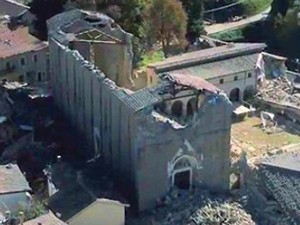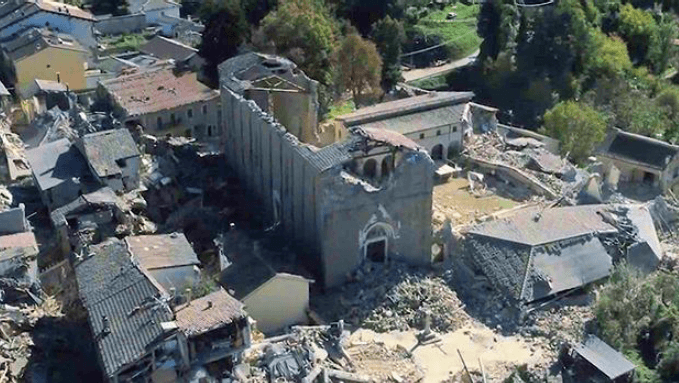

A bolt of lightning strikes St. Peter’s basilica in the Vatican City on October 7th, 2016
On the evening of June 23rd, 1812, Emperor Napoleon – disguised as a Polish lancer – was reconnoitering along the western bank of the river Niemen in preparation for the next day’s crossing of his Grande Armee into Russia when his horse threw him off. Someone in his entourage muttered, “A Roman would retreat.” Napoleon did not and the disaster of the Russian campaign proceeded to unfold.
The belief in signs and portents seems to be as old as humanity itself. Traditional cultures turned it into a fine art and a detailed science. There was augury, the interpretation of the flight of birds, already practiced in Egypt in the 14th century BC; other auspicial techniques included aeromancy (divination from atmospheric conditions), theriomancy (from the behavior of animals), and cryptomancy (from various other omens). Those were practices of civilizations still firmly connected with nature and open to intuitive communication with all levels of reality.
With the advent of rationalism and the exclusive monopoly of the scientific mode of thinking – the two flaps of our blinders – we have practically lost these important forms of perception. Now we tend to laugh off any suggestion that natural phenomena might be something more than just natural phenomena. But we may be laughing at our own risk.
On February 11th, 2013, a massive bolt of lightning struck the dome of St. Peter’s basilica in the Vatican City. This was the very same day when Pope Benedict XVI – in an almost unprecedented move – resigned from his office. Another lightning struck the same spot on October 7th, 2016, the feast day of Our Lady of the Rosary, commemorating the naval battle of Lepanto in 1571 in which the Catholic forces destroyed an invading Ottoman-Muslim fleet. And today, on October 30th, 2016, an earthquake has levelled the St. Benedict basilica in the Italian town of Norcia, the birthplace of Benedict and thus of his Benedictine order of monks which is justifiably credited with the preservation of Western classical civilization during the Dark Ages.
Are we going to repeat Napoleon’s fatal inattention to omens? Almost certainly so – “because it’s 2016” and we do not believe in “superstitions”. But what if “superstitions” believe in us?
.

The ruins of St. Benedict’s basilica in Norcia, Italy, on October 30th, 2016
.,,
Mariusz Wesolowski
Vancouver, BC, October 30, 2016
.

Kolejny omen na Malcie: https://www.lifesitenews.com/blogs/the-dark-symbolism-of-the-ceiling-collapsing-in-maltas-oldest-catholic-chur .